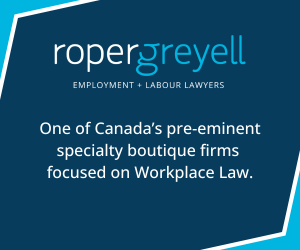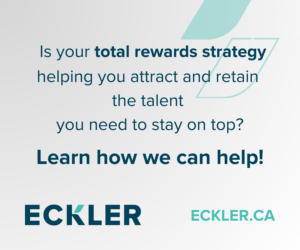Career Transition Today: Great Technological Advances, but Where is the Human Touch in Outplacement?
While technological change has a lengthy history of disrupting the workforce, the scope of our current technologies is facilitating the career transition phase as never before.
There have been some remarkable technological developments in the world of career transition (outplacement) over the last few years. These innovations have been important as they provide a useful, accessible form of support for individuals in career transition.
Technology Expands Career Transition Support
Some virtual career transition developments in recent years include such features as network tracking tools that are fully integrated with LinkedIn; job search engines that receive feeds from established job sites such as Indeed; research databases that provide information about a company or industry at the push of a button; and, of course, resumé management systems that allow for the development and storage of multiple versions of an individual’s resumé. Such tools are standard today.
The importance of Assessing the Right Career Path
An obvious use of any online career site is the administration of career assessments. Including them on a career portal makes them readily accessible and easy to complete, and it’s easy to see the results. There are a number of assessments used in career coaching, such as the Myers-Briggs, Birkman, Insights and the Strong Interest Inventory. Good providers will have all or most of these assessments available, as each tool has a different area of focus that can be important for an effective, comprehensive assessment process.
One of the benefits of virtual career transition is the ability to support transitioning employees with consistent services even in other parts of the world. As an example, a Canadian-based, international software development company was recently downsizing and provided in-person services for Canadian transitioning employees, all of whom were based in metropolitan areas, while selecting online services for international employees, most of whom were salespeople based in remote locations around the world.
Note that virtual career transition doesn’t always mean web-based. For example, one organization in the natural resource sector wanted to provide support to transitioning front-line employees scattered throughout British Columbia—and most of them were not comfortable with web-based services.
The solution? They picked up the phone to provide the needed support including a series of customized job search workshops by conference call, supplemented by extensive one-on-one support for each individual with an experienced career coach.
The Virtue of Personalized Support
Bear in mind, any type of virtual career transition has potential pitfalls as well—which is why a blended approach often works best. According to one survey of Termination Practices in Canada, the most important factor in selecting a career transition provider is “quality of consultants,” with 95 per cent of companies saying this is key. Virtual career transition, while convenient, can minimize the opportunity for an experienced career coach to support an individual with good advice at each step of their transition—making the value of “real” connections critically valuable.
At the outset of their career transition, many individuals do not know what they need and, frankly, the whole process of career transition support is often a mystery to them. They need close attention to make sure their next steps are the right ones. Think of the recently terminated individual who tells all his friends that he’s now unemployed, and he thinks that qualifies as networking. Worst of all, he thinks this approach will lead to re-employment.
Another example is the individual who uses a sample resumé from a career site and tries to make their own career history fit into that template. A person’s resumé is a unique marketing document that should demonstrate the depth and breadth of their experience, and tell the marketplace about their unique value proposition.
With frequent, one-on-one access to an experienced career coach, they can better learn the “ins-and-outs” of effective networking and develop a personalized plan that will work for their style and situation. Cutting and pasting from a sample is simply not as effective as working face-to-face with a career coach in an iterative process that produces a resumé that will lead to that desired interview.
The Dangers of Dial-a-Coach
Virtual career transition services sometimes include one-on-one support—but this is often provided in the form of a “dial-a-coach” service, which puts an individual in touch with whichever coach is currently on call, and often in a different market from where the individual lives and is looking for work.
Not being able to build a relationship over a period of time with a dedicated coach, there can be no understanding of specific, individual needs. Worse, the person has to tell their story over and over again to an array of coaches. Think of the reluctant, introverted types who may shy away from reaching out to a stranger—often the case with generic virtual services. They likely won’t, and they’re often the people who require support the most.
Blended Approach Strengthens Support
Perhaps the greatest risk of virtual-only career transition services is the more limited opportunity to build an emotional safety net for the individual in transition. Job loss is an emotionally difficult experience, dangerously difficult for some, and can lead to feelings of isolation.
In addition, mental illness is much more prevalent than previously realized, requiring us to do what we can to support at-risk individuals during a difficult time. A caring team approach, with a dedicated senior career coach, is an effective way to minimize this risk. Nothing can replace this high-touch support for active listening and confidence building.
Overall, virtual career transition has benefited from the addition of some useful technologies in recent years. As long as these are included as supplemental services to any career transition program, and not as the primary vehicle for delivering support, they can be effective. An approach that includes substantial transition support in all areas, both face-to-face and online, will be the best for the individual in transition. They will land better jobs, faster—and that should be the ultimate goal for employers and individuals alike.
And you, Artificial Intelligence?
Well, that’s a whole other article. Watch this space for more…
Peter Saulnier is the founder of LOGAN’s Talent Division, and a Partner with Talent Harbour, www.TalentHarbourGroup.com. He can be reached at ClientServices@LoganHR.com.
For the latest HR and business articles, check out our main page.
Reader Feedback
We want to hear from you!
Do you have a story idea you’d like to see covered by PeopleTalk?
Or maybe you’ve got a question we could ask our members in our People & Perspectives section?
Or maybe you just want to tell us how much you liked the article.
The door is always open.









